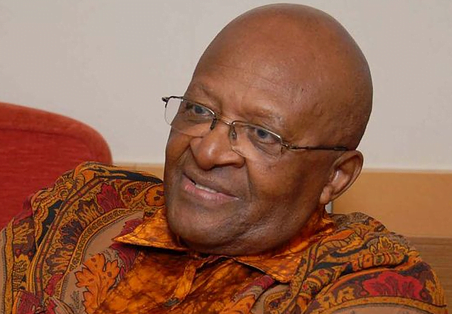Archbishop Desmond Tutu has an op-ed in Politico today outlining two concrete decisions Obama can take before the end of his term that would deal a significant blow to the spread of HIV/AIDS and help fulfill Obama’s own stated goal of an AIDS-free generation.
Says the Arch:
When Obama and I met in South Africa in June, I reminded him that, given his deep familial roots in the continent, his success is our success—his failure, our failure. With that in mind, there are two decisions Obama can make before the end of this year to fulfill the promise of an AIDS-free generation.
The first is to commit to doubling the number of people receiving antiretroviral treatment through the President’s Emergency Plan for AIDS Relief. Through PEPFAR, the U.S. government has already made treatment available to 6 million people living with HIV—an increase from only 50,000 when Congress authorized the program in 2003. Millions of lives have been saved, and at least 1 million babies have been born HIV-free thanks to the program.
Analysis in PEPFAR’s own blueprint for creating an AIDS-free generation has demonstrated that rapid scale-up of antiretrovirals is among the most effective ways to interrupt HIV transmission at the community level in hard-hit countries like Kenya and Uganda. Because PEPFAR has helped build the capacity in many African countries to massively scale up access to antiretrovirals, it should be possible—with proper funding and sustained political commitment—to treat 12 million people by the time Obama leaves office in 2017. This swift attack would deal a devastating blow to the virus where it is spreading most aggressively.
The second decision Obama could make concerns America’s role in expanding access to antiretrovirals through the Global Fund to Fight AIDS, Tuberculosis and Malaria. In just over a decade, the Global Fund has provided antiretrovirals to 5.3 million people, including 2.1 million pregnant women living with HIV. It is aiming to raise $15 billion through its third “replenishment” cycle—the centerpiece of which is a pledging conference next month in Washington, D.C.—to support its work over the next three years.
As the conference host, the United States is leading a diplomatic effort to urge other donors to increase their contributions to the Global Fund. The implicit promise from the United States, based on previous contributions, to give $1 for every $2 contributed by other donors in the lead-up to the December conference has already produced encouraging results. Among other recent pledges, the United Kingdom has announced it will double its already sizable commitment, and several Scandinavian countries have agreed to increase their contributions by 25 percent.
The donor meeting next month is not the end of this important fundraising drive, so I hope the president will agree to provide up to one-third of the total Global Fund’s donations—up to $5 billion—over the next three years. A matching grant from the United States would encourage those countries that have not yet pledged, or that make unambitious commitments, to do more—or risk leaving U.S. dollars on the table. Bold commitments from Australia, Canada, Germany, Japan and the European Commission, backed by a one-third U.S. match, could quickly turn the tide against AIDS.
The extent to which the Global Fund will reach its replenishment goal of $15 billion over three years is a key determinant of how humanity will fare in the fight against AIDS. The more money that goes in, the better we will do. In the meantime, the Senate just yesterday passed an authorization for PEPFAR until 2017. Chances are it will pass in the House — A rare moment of bipartisan (and bi-cameral) comity!
